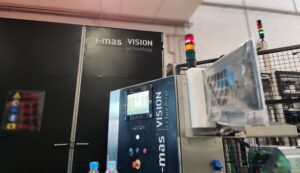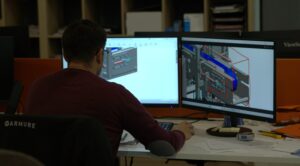The incorporation of machine vision systems in industrial environments has gone from being an emerging trend to becoming a competitive standard.
In this context, Deep Learning has made it possible to advance from the simple capture of images to their accurate analysis in real time. However, the choice of the appropriate neural network architecture is crucial to ensure the efficiency, robustness and scalability of the system.
Typology of problems in industrial machine vision
The nature of the problem to be addressed conditions the type of architecture required. The most common applications in the industrial field include:
- Image classification, used for automated defect detection according to predefined categories.
- Semantic segmentation, aimed at identifying specific areas affected in components or surfaces.
- Detection and localization of objects, applied to dimensional control and positioning verification.
- Optical Character Recognition (OCR), necessary for the automated reading of codes or technical inscriptions.
Each of these tasks requires specific configurations at the neural network level, both in its architecture and in the training of the models.
Deep Learning architectures most commonly used in industrial environments
Convolutional neural networks (CNNs) continue to be the basis of many computer vision systems. However, depending on the level of complexity, data volume and accuracy requirements, there are more advanced architectures that better meet certain needs:
- Classical CNNs (VGG, AlexNet): suitable for basic classification tasks.
- ResNet: effective in deep systems with multiple layers, with good results in complex flaw detection.
- YOLO / SSD: suitable for real-time object detection, especially useful in moving production lines.
- UNet: oriented to detailed segmentation, ideal for precise surface inspection.
- Visual transformers (ViT, DETR): applicable in scenarios with large data volumes and high accuracy requirements, particularly in R&D projects.
For compute-constrained edge devices, it is recommended to use lightweight architectures such as MobileNet or EfficientNet, which allow efficient deployment without significantly compromising model accuracy.
Technical considerations for Deep Learning model selection
Beyond the type of task, there are technical constraints that directly influence the choice of architecture:
- Available processing capacity (GPU, CPU or edge computing).
- System latency requirements, especially in on-line processes where immediate response is required.
- Quantity and quality of labeled data available for model training.
The optimal decision must strike a balance between performance, computational cost, system scalability and plant operational feasibility.
Deep Learning integration in I-MAS
In the engineering department of I-MAS we apply methodologies based on more than 20 years of experience in industrial automation and machine vision, integrating Deep Learning models in different industrial processes. This approach allows transforming advanced technologies into applied solutions, improving productivity, reducing errors and optimizing traceability and plant control.
Want to learn more about our services? Contact us or visit our projects section!



